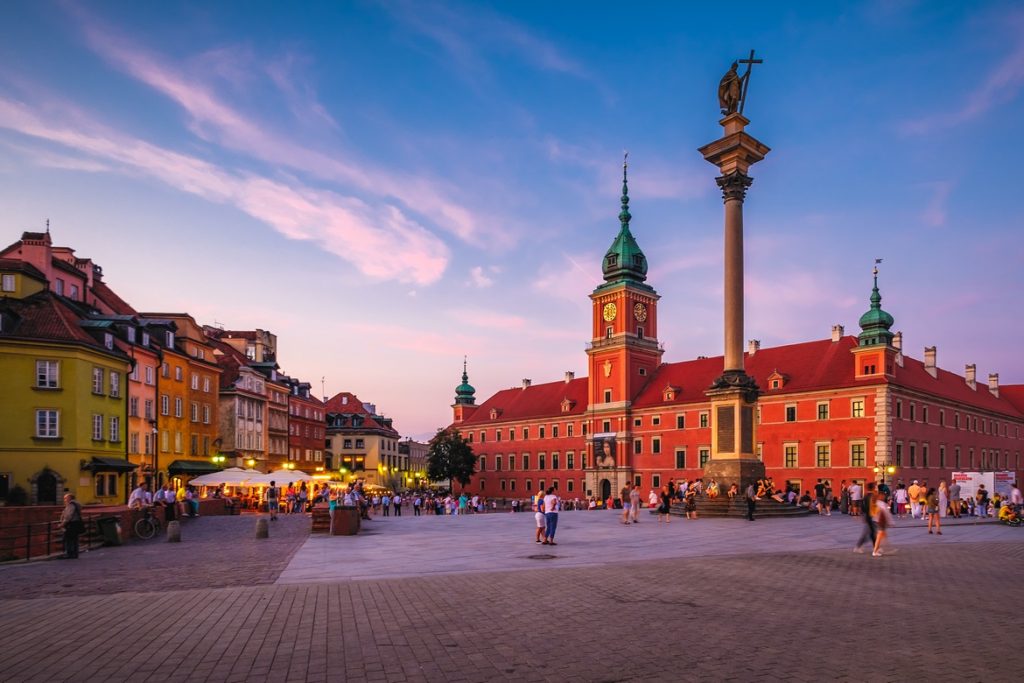
Warsaw, the capital of Poland, has experienced a large number of upheavals and conquests. Nevertheless, it managed to preserve the most value from each of her eras. Tourists come to Warsaw to walk along the streets of the Old Town and the picturesque Vistula embankments, wander around the large Lazienkowski park and look at the Church of the Holy Cross.
Even though during the Second World War the city was almost destroyed, its historical quarters were authentically recreated. The Royal Castle, the Cathedral of St. John the Baptist and other famous buildings were restored according to sketches of the 17th-18th centuries.
Entertainment and attractions
The Royal Palace on Castle Square is a visiting card of Warsaw and the main attraction. Tourists love to be photographed against its impressive backdrop and to see museum exhibits that tell about the life of the Polish nobility.
Stare Miasto – the Heart of Warsaw, cannot boast enormous size – you can get around on foot in a few hours. It ends with a popular tourist street – Krakow Suburb. There are a lot of interesting buildings – the oldest hotel “Bristol”, the palaces of Tyszkiewicz and Czapski, the Academy of Fine Arts, and monuments to Mickiewicz, Poniatowski and Prus.
Head to Łazienki to sit on the steps of the old amphitheatre and walk along the shady alleys of the 18th-20th century gardens. This is the most famous Warsaw park complex and one of the places untouched by the war.
The famous Palace on the Water is the pride of Lazenkovsky park. Inside the summer royal residence, an impressive collection of paintings is presented, and around there is a real zoo.
The Historical Museum on Market Square will help you understand the complex interweaving of Warsaw’s fate. The National Museum presents expositions of Polish painting and medieval art, as well as a large collection of old coins and icons. In the Marie Skłodowska-Curie House-Museum, you can get acquainted with the life of this unique scientist. In the Chopin Museum, handwritten scores and musical instruments of the great composer are presented, as well as his personal belongings, a death mask and a handprint.
